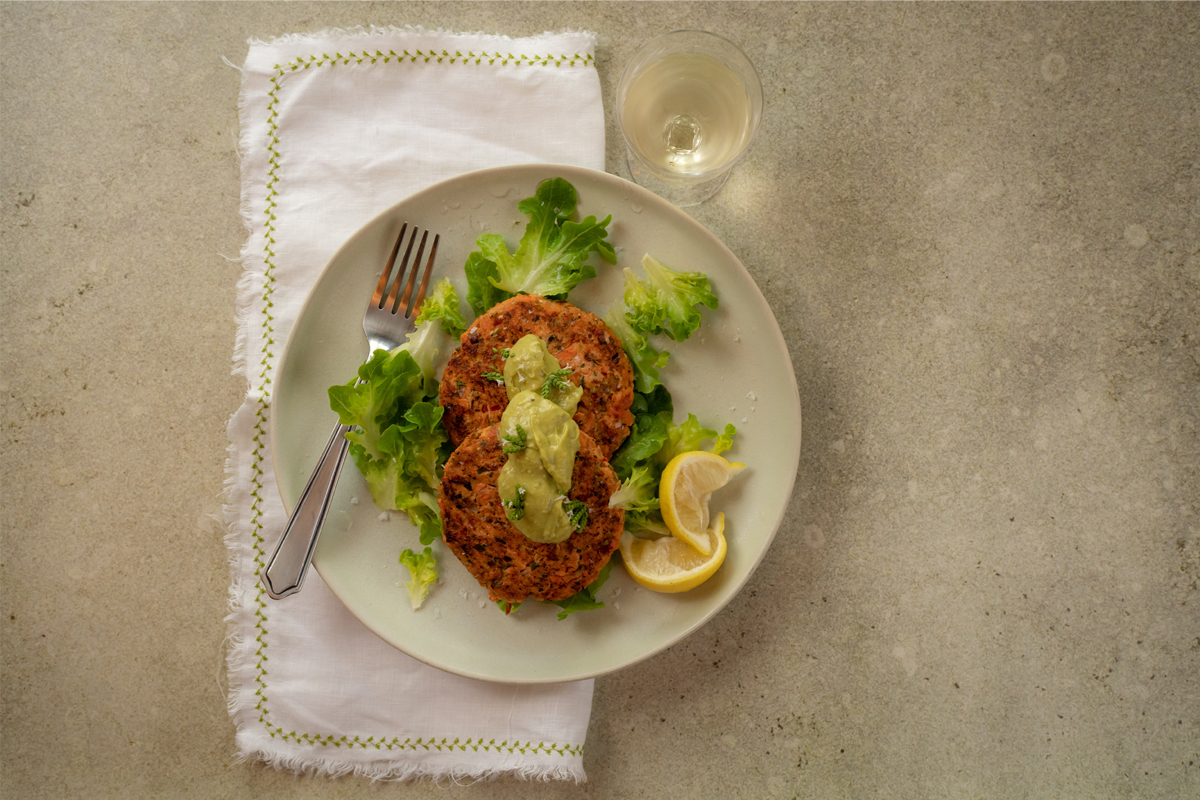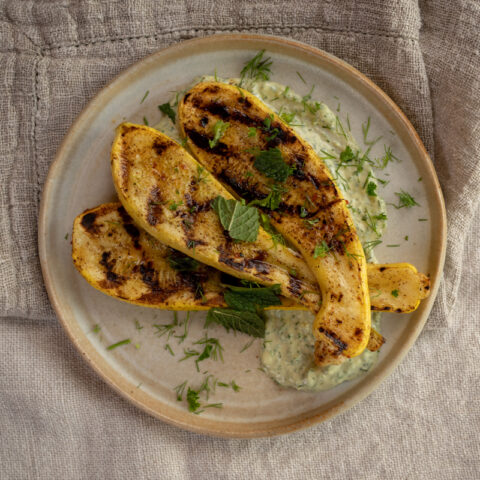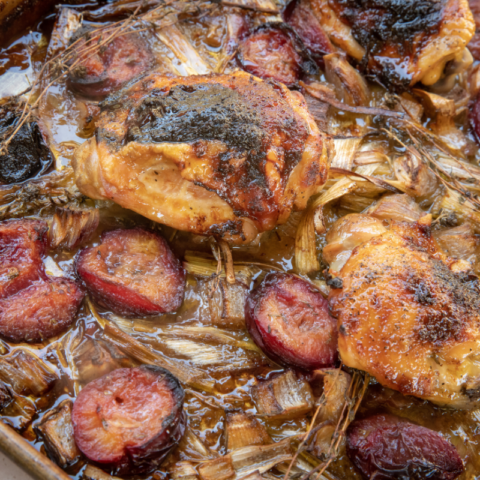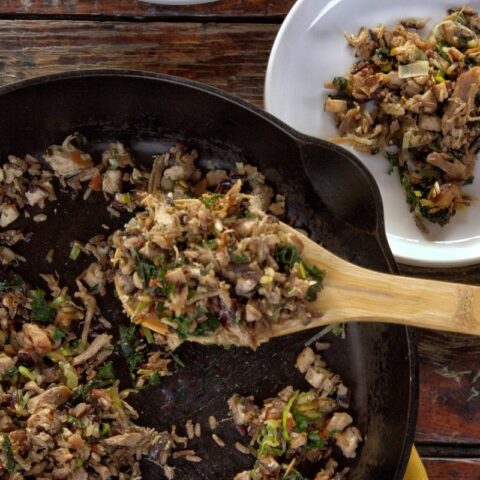Salmon Cakes with Avocado-Buttermilk Remoulade
We don’t often cook fish at the farm since we have a steady supply of amazing meats available to us, but every now and then we will serve these salmon cakes to employees in our meal program because they are just so tasty! Be sure to source wild-caught salmon from your local purveyor since they are fished more sustainably than other types of salmon. While remoulade is traditionally made with mayonnaise, this version uses a combination of buttermilk and avocado (we always have avocados on hand!) for a creamy, tangy sauce that pairs nicely with the cakes.
Ingredients
Instructions
- REMOULADE — In the bowl of a food processor, combine the avocado, buttermilk, mustard, horseradish, garlic, apple cider vinegar, paprika, cayenne, and sea salt. Puree until smooth and creamy, stopping to scrape down the sides of the bowl if needed, about 1 minute. Transfer the remoulade to a bowl. Cover with beeswax cloth or plastic wrap and refrigerate until ready to serve. The remoulade will keep in an airtight container, covered with beeswax cloth or plastic wrap to prevent browning, in the refrigerator for 3 days.
- SALMON CAKES — Preheat the oven to 375°F and position a rack in the middle.
- Line a medium baking sheet with parchment paper, and arrange the salmon fillets on the baking sheet. Season with 1 ¼ teaspoon of the salt and the pepper. Bake until the salmon is cooked through, 10 to 12 minutes. Remove the baking sheet from the oven and let cool. When the salmon is cool enough to handle, transfer the fillets to a medium bowl and use a fork to mash them into small pieces.
- Heat 1 tablespoon of the avocado oil in a medium saute pan over medium-high heat. Add the red bell pepper and red onion, and cook, stirring frequently, until softened and slightly caramelized, about 5 to 8 minutes. Transfer to the bowl with the salmon.
- Wipe out the pan with a paper towel. Heat another 1 tablespoon of the avocado oil over medium-low heat. Add the leeks, and cook, stirring frequently, until softened and slightly caramelized, about 8 to 10 minutes. Transfer the leeks to the bowl with the salmon. Add the mayonnaise, lemon juice, dill, parsley, and the remaining 1 teaspoon salt. Using a clean hand, mix the ingredients until they are well combined.
- Reduce the oven temperature to 350°F. Line a medium baking sheet with parchment paper.
- Using a ½ cup measuring cup, portion the salmon mixture into 3.5-inch diameter cakes. Place the cakes on the prepared baking sheet. You should have 10 salmon cakes.
- Heat 1 tablespoon of the avocado oil in a medium saute pan over medium heat. Gently add 5 of the salmon cakes to the pan and cook until golden brown, about 2 minutes per side. Transfer the seared salmon cakes back to the baking sheet. Wipe out the saute pan with a paper towel, and repeat with the remaining 1 tablespoon oil and the remaining 5 salmon cakes.
- Transfer the baking sheet to the oven and bake until the cakes are heated through, about 5 minutes.
- Serve the salmon cakes warm with the avocado sauce and lemon wedges on the side.
https://www.apricotlanefarms.com/recipe/salmon-cakes-with-avocado-buttermilk-remoulade/
Copyright © 2024 Apricot Lane Farms. All rights reserved.


 10 cakes
10 cakes 
 Easy
Easy 

